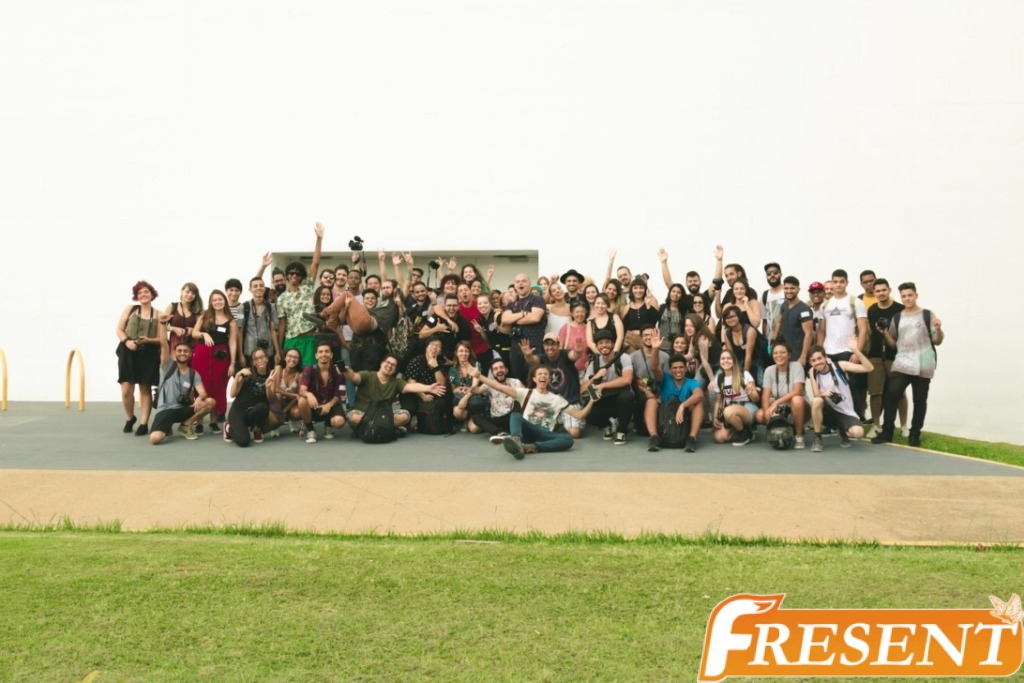Are you looking to establish your brand as a leader in the SaaS industry? One of the most effective ways to do so is through thought leadership. By positioning yourself as an authority on relevant topics, you can build credibility and trust with potential customers, partners, and investors.
But what exactly is thought leadership in the context of SaaS? It’s about providing valuable insights, expertise, and innovative ideas that help shape the conversation within your industry. It’s not just about promoting your own products or services – it’s about contributing to the larger discourse and offering meaningful solutions to common challenges. In this article, we’ll explore how you can establish industry authority through thought leadership and why it matters for long-term success in the competitive world of SaaS.
Understanding the Importance of Thought Leadership in SaaS
Understanding the importance of thought leadership in SaaS can’t be overstated – it’s essential for establishing authority in the industry. Thought leadership is not just about promoting your brand or products, but rather providing valuable insights and knowledge to your target audience. By becoming a thought leader, you position yourself as an expert in your field and gain trust from potential customers.
The psychology behind thought leadership lies in the fact that people tend to follow those who they perceive as knowledgeable and trustworthy. When you establish yourself as a thought leader, you create a loyal following of individuals who look up to you for guidance and advice. As a result, these followers are more likely to choose your product or service when making purchasing decisions.
Measuring ROI of thought leadership efforts can be challenging, but it is not impossible. You can track metrics such as website traffic, social media engagement, lead generation, and customer retention rates to evaluate the effectiveness of your thought leadership efforts. By understanding what works and what doesn’t work for your business, you can refine your approach and maximize the impact of your thought leadership initiatives.
By establishing yourself as a thought leader in SaaS, you set yourself apart from competitors by showcasing unique perspectives on industry trends while providing valuable information to potential customers. With this foundation established, it becomes easier to transition into building out your unique value proposition that will differentiate you further from others in the space without relying solely on marketing tactics or pricing strategies alone.
Establishing Your Unique Value Proposition
You need to clearly communicate what sets your product apart from the competition in order to attract and retain customers. Crafting messaging that highlights your unique value proposition is crucial for establishing industry authority as a thought leader in SaaS. Your messaging should be clear, concise, and compelling enough to convince potential customers that your product is the best solution for their needs.
To craft effective messaging, you must first identify your differentiation tactics. What makes your product stand out from others in the market? Is it faster, more user-friendly, or more affordable? Once you have identified these key differentiators, you can use them to create a strong value proposition that resonates with potential customers.
By effectively communicating your unique value proposition through targeted messaging, you can establish yourself as an industry authority and build a loyal customer base. In the next section, we will discuss how to identify your target audience and tailor your messaging specifically to their needs and pain points.

Identifying Your Target Audience
Once you know who your ideal customer is, it becomes easier to tailor your messaging and attract their attention. Defining personas is a crucial step in identifying your target audience because it helps you understand what motivates them, what problems they face, and how they make purchasing decisions. A persona is a fictional representation of your ideal customer based on market research and audience segmentation.
When creating personas, consider demographics such as age, gender, job title, income level, etc. Also think about psychographics like values, interests, lifestyle choices that influence their behavior. Once you have defined your personas you can start tailoring content to each segment. By understanding what drives each persona you can create messaging that resonates with them specifically.
Market research is essential for defining personas because it allows you to identify trends in the industry and better understand the needs of potential customers. Use surveys or social media analytics to gather data on topics like pain points or buying habits within your target audience. This information will help inform the creation of educational content targeted at these individuals.
By identifying your target audience through persona development and market research you can better tailor content to meet their needs and establish yourself as an authority in the industry. Creating educational content that speaks directly to each persona’s unique challenges will ultimately help build trust with potential customers and attract more business opportunities in the future.
Creating Educational Content
If you want to establish yourself as a thought leader in the SaaS industry, creating educational content is key. Blog posts, whitepapers, eBooks, webinars, podcasts, and videos are all effective ways to share your expertise with your target audience and position yourself as an authority in the field. By providing valuable information and insights through these mediums, you can build trust with potential customers and differentiate yourself from competitors.
Blog Posts, Whitepapers, eBooks
Creating blog posts, whitepapers, and eBooks is a powerful way to establish industry authority in the world of SaaS. As you create content for your audience, keep in mind a few content creation tips that will help you stand out from the crowd. Firstly, make sure your content is informative and valuable for your readers. Offer them actionable insights that they can use to improve their business or personal lives.
Secondly, make sure to measure success metrics such as page views and engagement on social media. This will give you an idea of what type of content resonates with your audience and what needs improvement. Lastly, don’t be afraid to experiment with different formats and topics until you find what works best for both you and your audience. By consistently creating high-quality content that provides value to your readers, you’ll establish yourself as an authority figure within the SaaS industry.
As you continue to build upon your thought leadership efforts through blog posts, whitepapers, and eBooks it’s important to also consider other forms of educational content such as webinars, podcasts, and videos. These mediums allow you to connect with your audience on a more personal level while providing additional value beyond written content.
Webinars, Podcasts, Videos
You can deepen your connection with your audience and provide even more value by incorporating interactive webinars, engaging podcasts, and informative videos into your content strategy. These mediums allow you to present information in a way that is not only informative but also entertaining. Interactive webinars give you the opportunity to connect with your audience in real-time, answer their questions, and provide valuable insights on relevant topics. Engaging podcasts allow you to share industry knowledge while giving listeners the chance to learn on-the-go. And visual storytelling through informative videos can help bring complex concepts to life.
By adding these methods of communication into your thought leadership strategy, you are able to showcase your expertise in a way that resonates with your audience. You become more than just a source of information – you become an authority figure who is passionate about sharing their knowledge. This creates a deeper level of trust between you and your audience as they begin to see the human side of your brand. With these tools at hand, it’s time to take it one step further: participating in industry events where you can build relationships with other experts in the field.

Participating in Industry Events
Attending industry events can be a valuable opportunity for SaaS professionals to establish themselves as thought leaders in their field. These events offer networking opportunities where you can connect with other industry experts and showcase your expertise. You can also learn about the latest trends, challenges, and best practices in your field.
To make the most of these events, prepare ahead of time by researching the speakers, topics, and attendees. Identify sessions that align with your interests and goals and plan to attend them. Take notes during the sessions and ask thoughtful questions during Q&A periods to demonstrate your knowledge and engage with others.
Don’t forget to follow up after the event with new connections you’ve made. Send personalized messages or invitations on LinkedIn or other professional networks to keep in touch. Engaging with customers and prospects on social media is another important step in establishing yourself as a thought leader in the SaaS industry.
Engaging with Customers and Prospects on Social Media
Now that you understand the importance of participating in industry events, it’s time to talk about another crucial aspect of establishing thought leadership: engaging with customers and prospects on social media. Social media platforms like Twitter, LinkedIn, and Facebook provide an excellent opportunity for SaaS companies to build relationships with their audience and foster engagement.
One way to do this is through social listening. By monitoring conversations about your brand or industry on social media, you can identify opportunities to respond to feedback and address any concerns or questions your customers may have. This not only shows that you care about their experience but also helps build trust and loyalty.
Another way to engage with your audience on social media is by sharing valuable content that resonates with them. This could be anything from blog posts and infographics to webinars or podcasts. By consistently providing high-quality content that educates or entertains your audience, you position yourself as a trusted source of information in the industry.
As you continue building relationships and fostering engagement on social media, don’t forget the power of leveraging influencers and industry experts. These individuals have already established authority in your field and can help amplify your message to a broader audience. In the next section, we’ll dive deeper into how partnering with influencers can take your thought leadership efforts to new heights.
Leveraging Influencers and Industry Experts
Get ready to take your influence in the industry to new heights by partnering with experts and influencers who have already established themselves as trusted sources in your field. Influencer outreach is a powerful way to expand your reach and tap into a wider audience. By teaming up with influential people, you can leverage their authority and credibility to boost your own brand.
To make the most of influencer outreach, consider these four tips:
- Identify the right influencers: Look for individuals who are respected within your industry and whose values align with yours.
- Build relationships: Start by engaging with them on social media or commenting on their blog posts. Offer value before asking for anything in return.
- Collaborative campaigns: Develop joint content that showcases both parties’ expertise and highlights how they complement each other.
- Measure results: Track engagement, traffic, leads, and sales generated from the campaign to determine its success.
By implementing these strategies, you’ll be well on your way to building meaningful partnerships that help establish you as a thought leader in your industry.
As you start exploring influencer outreach as a tool for establishing yourself as an authority in SaaS, keep in mind that this is just one piece of the puzzle. To truly build lasting thought leadership, you need a holistic approach that includes developing original content, speaking at events, offering expert insights through whitepapers or webinars – all while remaining authentic and true to your brand’s mission. With consistent effort over time, you’ll soon find yourself at the forefront of conversations about innovation and progress within SaaS – recognized not just by peers but also by customers seeking out solutions like yours!
Establishing a Thought Leadership Program
To truly triumph as a titan in your trade, take time to tactfully tailor a comprehensive program for promoting professional prowess. Establishing a thought leadership program can help you position yourself as an industry expert and gain credibility with your target audience. It involves developing training programs that equip your team with the skills and knowledge they need to create valuable content and engage with your customers.
One way to establish a thought leadership program is by creating content that addresses the pain points and challenges of your target audience. This could include blog posts, webinars, whitepapers, or social media updates that offer solutions to common problems faced by your customers. By consistently producing high-quality content, you can build trust with your audience and position yourself as a go-to resource for industry insights.
Developing metrics is another key component of a successful thought leadership program. You need to measure the impact of your efforts so you can adjust your strategy accordingly. Metrics should be tied directly to business goals such as lead generation, brand awareness, or customer engagement. With this data in hand, you can continue refining your approach and demonstrating the value of thought leadership within your organization.
As you begin measuring the impact of your thought leadership efforts, it’s important to stay focused on achieving tangible results that align with business objectives. By continuously improving and refining your strategy based on real-world data, you’ll be able to demonstrate the power of thought leadership in driving growth and establishing authority within the SaaS industry.
Measuring the Impact of Your Thought Leadership Efforts
Measuring how your thought leadership efforts impact your business goals is a crucial component to refining and improving your overall strategy. To ensure that you are achieving the desired results, there are several key metrics that you should track. These include:
- Measuring ROI: One way to determine the effectiveness of your thought leadership program is by measuring its return on investment (ROI). This involves comparing the costs associated with your program against the revenue generated as a direct result of it.
- Tracking analytics: Another important metric is tracking website analytics such as traffic, engagement, and conversions. By monitoring these metrics, you can gain insights into which pieces of content are resonating with your audience and adjust accordingly.
- Social media engagement: Keeping an eye on social media engagement levels can also provide valuable feedback on the success of your thought leadership program. Likes, shares, and comments all serve as indicators of how well-received your content is in the industry.
- Thought leadership survey data: Finally, conducting regular surveys can help gauge industry sentiment towards your brand and identify areas for improvement.
By measuring these key metrics and regularly evaluating their impact on business goals, you can refine and improve your overall thought leadership strategy to better establish yourself as an authority in the SaaS industry.
To stay up-to-date with industry trends and insights, it’s important to continually seek out new information through sources such as conferences, webinars, newsletters, and networking events. Staying ahead of emerging trends will allow you to adapt quickly to changes in the market and maintain relevance within the industry landscape.
Staying Up-to-Date with Industry Trends and Insights
Staying ahead of the curve and keeping your finger on the pulse of industry trends is like riding a wave that constantly ebbs and flows. Industry research is crucial to stay up-to-date with emerging technologies, changing customer preferences, and market trends. As a thought leader in the SaaS industry, it’s essential to conduct regular competitive analysis to understand what your competitors are doing better than you and where you have an edge.
Industry research helps identify new opportunities for growth and innovation while avoiding potential roadblocks. It also allows you to create relevant content that resonates with your target audience. By analyzing industry trends, you can anticipate future changes in the marketplace and position yourself as a solution provider before your competition does.
Competitive analysis helps benchmark your performance against others in the industry. It provides insights into their strategies, strengths, weaknesses, pricing models, product features, and customer experiences. This information can help refine your approach by identifying gaps in the market that you could fill or areas where you need improvement. Staying up-to-date with industry trends and conducting regular competitive analysis will keep you one step ahead in establishing thought leadership in SaaS.
As a thought leader in SaaS, staying up-to-date with emerging technologies and market trends is vital for building trust and credibility with your audience. In the next section of this article, we’ll discuss how to leverage this knowledge to develop unique viewpoints that differentiate yourself from other companies in the space.
Building Trust and Credibility with Your Audience
When it comes to building trust and credibility with your audience, two key points to keep in mind are providing solutions and value, and being transparent and authentic. You need to show your audience that you have the answers they’re looking for, while also demonstrating that you understand their needs by offering valuable solutions. At the same time, you must be open and honest about who you are as a company or brand, showing your human side through authenticity so that people can relate to you on a more personal level. By doing this, you’ll build trust with your audience and create a loyal following over time.
Providing Solutions and Value
You can’t establish industry authority in SaaS without providing valuable solutions to your customers. It’s not enough to simply talk about your product or service; you need to show how it solves a problem for your target audience. One way to do this is by sharing case studies and customer success stories that demonstrate the real-world benefits of using your solution. By highlighting specific examples of how you’ve helped other companies, you’re able to build trust and credibility with potential customers.
In addition, interactive tools and demos can be incredibly effective in showing the value of your solution. These types of resources allow potential customers to see firsthand how your product works and what kind of results they can expect. By providing these solutions and value up front, you’re able to position yourself as an authority in the industry and differentiate yourself from competitors who may only talk about their features or pricing. And once you’ve established that authority, it becomes much easier to attract new customers and retain existing ones through being transparent and authentic in all communication with them.
Being Transparent and Authentic
Don’t shy away from being open and honest in your communication with potential and existing customers. Balancing vulnerability and expertise is key to establishing authenticity in the eyes of your audience. It’s easy to focus on promoting your product or service, but customers are looking for more than just a sales pitch. They want to know that they can trust you and your company.
By showing vulnerability, such as admitting mistakes or sharing challenges faced during the development process, you humanize your brand and build emotional connections with customers. At the same time, it’s important to maintain a level of expertise so that customers know they are getting high-quality solutions from a knowledgeable source. Striking this balance takes practice, but it’s worth it for the long-term benefits of building an authentic relationship with customers. Now let’s dive into how creating a community around your brand can further enhance these efforts.

Creating a Community Around Your Brand
By building a community around your brand, you’ll be able to create a space where like-minded individuals can share ideas and insights, leading to a stronger industry authority for your SaaS business. The benefits of having a community are plenty: it fosters trust and loyalty among customers, allows for better customer service, and provides valuable feedback that can help improve your product. However, creating a community also comes with its own set of challenges.
One of the biggest challenges in creating a community is finding the right balance between engagement and promotion. While it’s important to promote your brand and products, too much self-promotion can turn off potential members. Instead, focus on providing value through informative content, discussions, and events that will attract people to join your community. Once they’re there, engage with them by responding to comments and questions in a timely manner.
To ensure that you’re engaging with customers effectively in your community, it’s important to follow some best practices while avoiding common pitfalls. Some best practices include being transparent about your intentions for the community and setting clear guidelines for participation. It’s also important to make sure that conversations stay respectful and constructive – moderating when necessary. Common pitfalls include dismissing negative feedback or ignoring complaints altogether; this can damage trust among members and hurt the overall health of the community.
Creating a thriving community around your brand takes time and effort but can ultimately lead to substantial benefits for both you as an individual thought leader within the industry as well as for the success of your SaaS company overall. With engagement strategies tailored towards promoting discussion rather than just advertising products or services alone along with maintaining active moderation efforts throughout interactions amongst members; establishing yourself as an authority figure begins with authentic connections made through meaningful conversation before moving into concrete sales pitches or promotional tactics aimed at generating revenue growth opportunities such as search engine optimization (SEO) techniques used alongside social media marketing campaigns designed specifically towards driving traffic back onto one’s website via high-quality content designed to highlight the brand’s expertise and unique value proposition.
Optimizing Your SEO and Digital Marketing Strategy
When potential customers search for your brand online, they should be able to easily find and engage with your website through effective SEO optimization and digital marketing techniques that showcase your unique value proposition. Optimizing your website’s content with relevant keywords and meta descriptions is crucial in improving your organic search rankings. This means conducting thorough keyword research to understand what phrases or terms are commonly used by people searching for products or services similar to yours.
In addition to SEO optimizations, digital marketing strategies such as social media advertising, email campaigns, and paid search ads can also drive traffic to your site. Utilizing these tactics allows you to target specific audiences based on demographics, interests, or behaviors. Effective use of digital marketing techniques can result in increased site traffic and conversions while also building brand awareness.
By implementing a comprehensive SEO and digital marketing strategy, you can effectively establish yourself as an industry authority in the SaaS space. The more visible your brand is online, the more likely it is that other companies within the industry will take notice of your expertise and consider partnering with you. In our next section, we’ll explore how collaborating with partners and affiliates can further enhance your thought leadership efforts.
Collaborating with Partners and Affiliates
Collaborating with partners and affiliates can greatly expand your reach and bring new opportunities to your brand, as you work together to create mutually beneficial relationships. Here are some ways that partner collaboration and affiliate marketing can benefit your business:
- Increased exposure: By partnering with other companies or influencers in your industry, you can reach a wider audience than you would on your own.
- Access to new markets: Collaborating with partners who have a different customer base than yours can help you break into new markets and attract new customers.
- More credibility: When you work with respected partners, their endorsement of your brand can boost your reputation and establish you as an authority in the industry.
- Cost-effective marketing: Affiliate marketing allows you to pay for advertising only when it generates results, making it a cost-effective way to promote your products or services.
Partner collaboration and affiliate marketing are powerful tools for building thought leadership in the SaaS industry. By working together with others who share your values and goals, you can amplify the impact of your message and establish yourself as a trusted source of information. As you continue to develop these relationships, be sure to track key metrics like engagement rates and conversion rates so that you can measure the success of each partnership.
As important as it is to collaborate effectively with others, it’s also crucial to continuously improve and innovate your thought leadership strategy. In the next section, we’ll explore some ways that you can stay ahead of the curve by adapting to changes in the market and keeping up with emerging trends.
Continuously Improving and Innovating Your Thought Leadership Strategy
To continuously improve your thought leadership strategy, you should engage in collaborative brainstorming with your team. This approach can help generate fresh ideas and perspectives that could lead to breakthrough insights. Each member of the team brings a unique set of skills and experiences that can contribute to the overall success of the strategy. By working together, you can create content that resonates with your audience and establishes your authority in the industry.
Another way to improve your thought leadership strategy is through benchmarking analysis. You should research what other successful companies in your industry are doing differently than you are. Identify their strengths and weaknesses, understand how they position themselves as thought leaders, and learn from their best practices. Use this information to refine your own strategy and stay ahead of the competition.
In summary, improving and innovating on your thought leadership strategy requires a continuous effort to challenge assumptions, gather new ideas from a variety of sources, and adapt to changing market conditions. Collaborative brainstorming with your team members can bring fresh perspectives while benchmarking analysis provides insights into what works for other successful companies in the industry. By incorporating these processes into your regular planning cycle, you can establish yourself as an authority in the SaaS space over time.

Conclusion
Congratulations! You now understand the power of thought leadership in the SaaS industry and how it can establish your authority. By creating educational content, participating in industry events, optimizing your SEO and digital marketing strategy, collaborating with partners and affiliates, and continuously improving your approach, you’ll set yourself apart from competitors.
Imagine yourself as a trusted leader in the SaaS space – one who is respected for their knowledge, experience, and ability to provide value to their target audience. With a strong thought leadership strategy, you can make that vision a reality. So go forth and establish your unique value proposition, identify your target audience, create engaging content, build an online community around your brand and innovate – the future of SaaS is yours for the taking.

